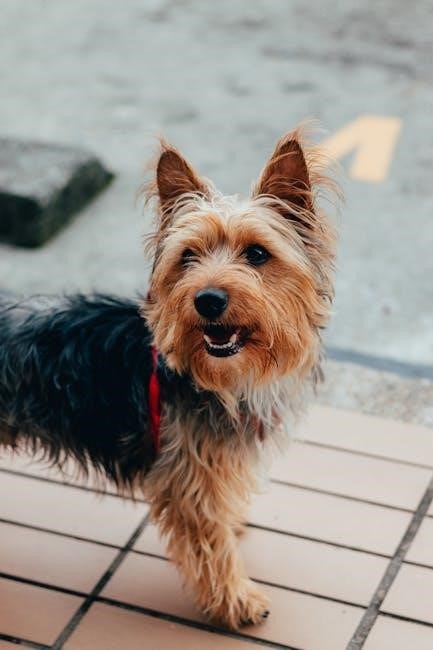Guide dogs in harness are specially trained to assist individuals with visual impairments, navigating obstacles and indicating objects like curbs or stairs, ensuring safe and independent travel.
Understanding the Role of Guide Dogs
Guide dogs are meticulously trained to assist individuals with visual impairments, ensuring safe navigation through various environments. Their primary role is to avoid obstacles, indicate objects such as curbs or stairs, and guide their handlers effectively. These dogs are not merely pets but highly skilled companions, relying on precise commands and harness signals to perform their duties; Their ability to interpret their surroundings and communicate through subtle movements is crucial for independent travel, making them indispensable partners for those they serve.
The Importance of the Harness in Guiding
The harness is a critical tool for guide dogs, enabling clear communication between the dog and handler. It allows the handler to feel the dog’s movements and guidance through subtle pulls and resistance. The harness ensures the dog remains focused and in “work mode,” distinguishing it from a pet. When wearing the harness, the guide dog is trained to navigate obstacles and respond to commands, providing safe and efficient travel. The harness symbolizes the dog’s role and responsibility, ensuring the handler can trust the dog’s guidance implicitly.

How Guide Dogs Navigate While in Harness
Guide dogs navigate by avoiding obstacles, indicating objects like curbs or stairs, and responding to commands, ensuring safe and efficient travel while in harness.
Obstacle Avoidance and Pathfinding
Guide dogs excel in navigating around obstacles while in harness, ensuring their handler’s safe passage. They are trained to identify and avoid objects, such as low-hanging branches or uneven surfaces, while maintaining a straight path. The dog’s keen spatial awareness allows it to steer clear of hazards, providing a smooth journey. By focusing on the environment ahead, the dog prioritizes safety, often stopping or redirecting to avoid potential dangers. This skill is crucial for independent travel, enabling handlers to move confidently through various settings.
Indicating Objects and Stairs
Guide dogs in harness are trained to indicate objects and stairs, ensuring their handler is aware of their surroundings. When encountering stairs, the dog will often pause or pull slightly, signaling the change in terrain. For objects like poles or low-hanging branches, the dog may stop or divert the path. This communication is vital for safe navigation, as the handler relies on these cues to understand the environment. The dog’s ability to detect and indicate such features enhances trust and independence in their partnership.
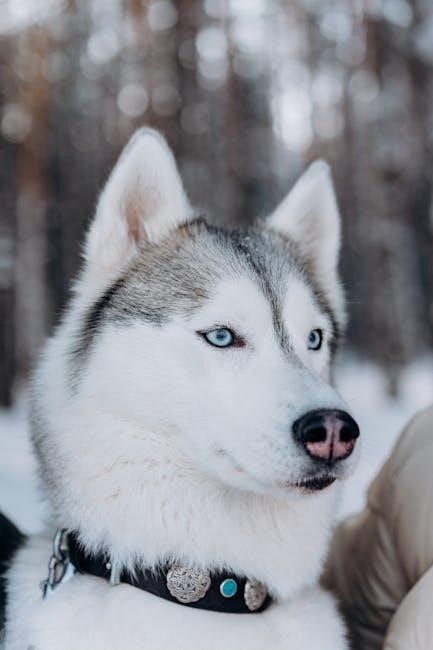
Communication Between Handler and Guide Dog
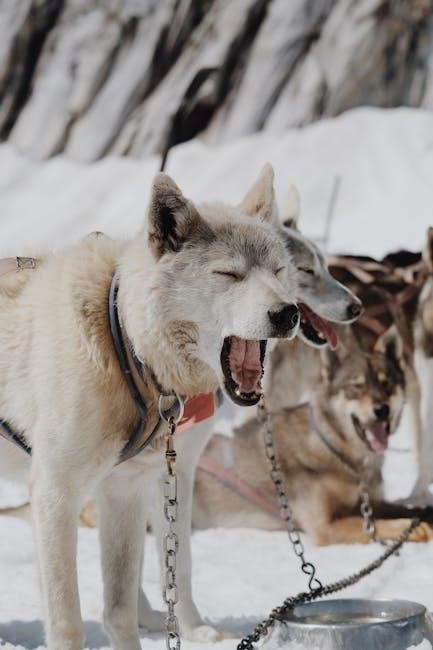
Guide dogs rely on verbal commands and body language from their handlers, while handlers interpret the dog’s movements and tension in the harness to navigate effectively.
Verbal Commands and Body Language
Handlers use specific verbal commands like “forward,” “left,” and “right” to guide their dogs, while body language, such as leash tension and movement, reinforces these directions. Dogs are trained to respond to consistent commands and subtle physical cues, ensuring clear communication. The handler’s tone and pace of speech also play a role in directing the dog. This dual system of verbal and non-verbal communication allows for seamless teamwork, enabling the guide dog to navigate effectively and safely in various environments.
Handler’s Role in Directing the Dog
The handler plays a crucial role in guiding the dog by providing clear direction and purpose. They must know their destination and use commands to communicate their intentions. The handler’s responsibility includes initiating movements, choosing routes, and making decisions at intersections or obstacles. While the dog navigates around challenges, the handler ensures the path aligns with their goals. Effective communication and trust between the handler and dog are essential for successful teamwork. The handler’s confidence and clarity in giving commands help the dog perform its role effectively.
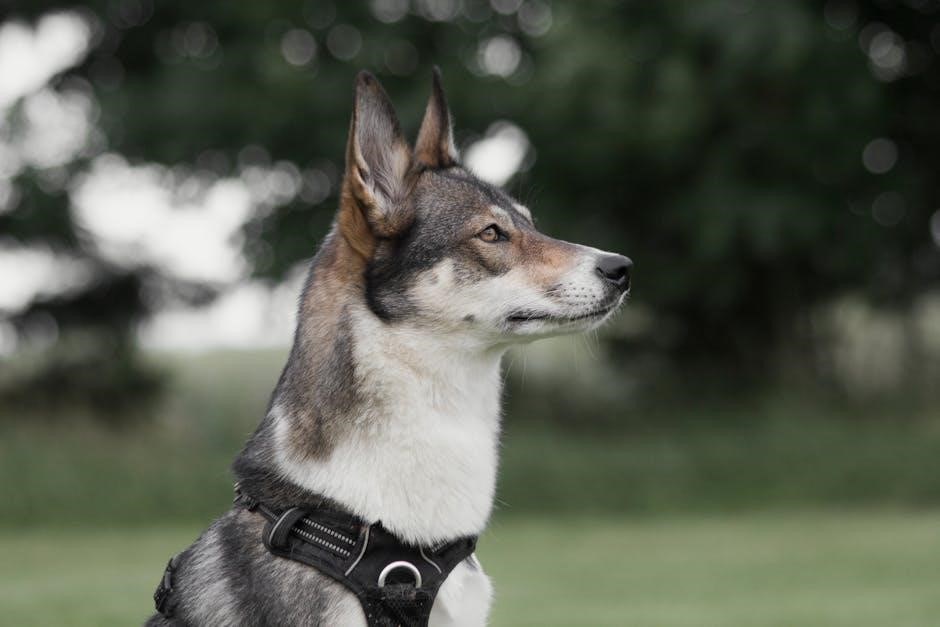
Training Process for Guide Dogs
Guide dogs undergo rigorous training, starting with basic obedience, followed by harness introduction, obstacle navigation, and public access manners, ensuring they assist effectively in various environments.
Basic Handling Techniques
Basic handling techniques for guide dogs include teaching fundamental commands like “forward,” “stop,” and “back,” essential for navigation. Handlers learn to use the harness effectively, understanding the dog’s body language and cues. These techniques, rooted in scientific learning theory, ensure clear communication and safe guidance. Proper handling enables the dog to focus on its tasks, such as avoiding obstacles and indicating stairs or curbs, while the handler provides directional commands; This foundation is vital for building a reliable partnership.
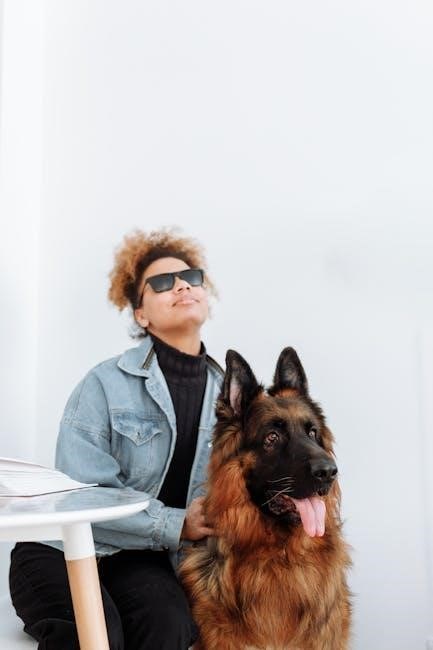
Advanced Training for Specific Needs
Advanced training for guide dogs addresses unique challenges, such as navigating complex routes or busy public spaces. Dogs learn to recognize traffic signals, avoid moving obstacles, and handle environments like escalators or public transportation. Handlers are taught to adapt commands for specific situations, ensuring the dog responds appropriately. This specialized training enhances the dog’s ability to guide safely and efficiently, catering to the handler’s lifestyle and daily requirements. It builds on basic techniques, refining the dog’s skills for real-world scenarios and diverse needs.
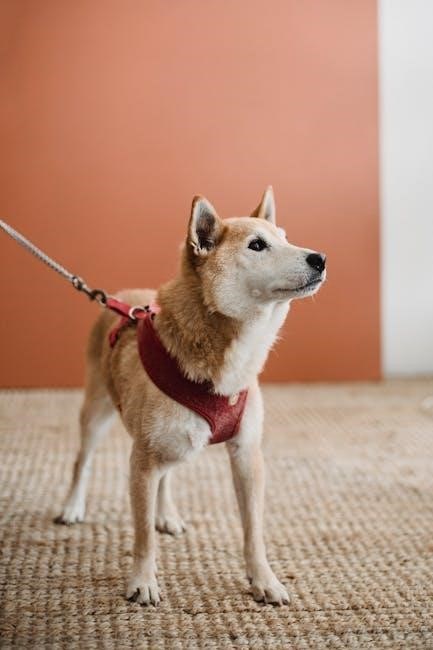
Handler’s Responsibilities
Handlers must direct the dog using commands, ensure its focus, and handle daily care to maintain effective guidance and the dog’s well-being.
Daily Care and Maintenance
A guide dog’s harness and equipment require regular checks for wear and tear. Proper grooming, a balanced diet, and regular veterinary visits are essential. Handlers must ensure the dog’s living environment is clean and comfortable. Mental stimulation through play and training exercises is also crucial. Daily care routines help maintain the dog’s physical and emotional well-being, ensuring they remain focused and effective in their guiding role. Consistent maintenance is vital for the dog’s ability to assist reliably.
Using Commands Effectively
Clear and consistent commands are essential for guiding a dog in harness. Handlers use specific verbal cues like “forward,” “stop,” and “left” to navigate safely. The tone and timing of commands matter, ensuring the dog understands the task. Regular practice reinforces the dog’s response to these commands, building trust and teamwork. Effective communication helps the dog stay focused, avoiding distractions; Proper command usage ensures smooth navigation and maintains the dog’s ability to assist reliably in various environments;
Challenges Faced by Guide Dogs and Handlers
Guide dogs and their handlers encounter challenges like uneven sidewalks, construction zones, and crowded areas, requiring precise navigation. Public interactions, such as strangers approaching, can distract the dog, so handlers must ensure the dog stays focused. Additionally, handlers must direct the dog through obstacles, relying on effective communication and trust. These challenges underscore the importance of teamwork and adaptability in their partnership.
Navigating Different Environments
Guide dogs in harness face unique challenges in various environments, such as urban areas with crowds and construction or rural settings with uneven terrain. In urban environments, distractions like pedestrians and vehicles require precise navigation, while rural areas may present obstacles like potholes or debris. Indoor spaces, such as malls or offices, pose challenges like narrow aisles or moving escalators. Each environment demands adaptability and keen spatial awareness from the dog, as well as clear communication from the handler to ensure safe and efficient travel.
Handling Public Interactions
Guide dogs in harness often attract public attention, which can sometimes lead to challenges. Handlers may face unwanted questions, petting requests, or distractions. It’s important to politely inform others that the dog is working and should not be interrupted. Simple phrases like “Please don’t pet my dog while it’s working” can help maintain focus. Educating the public about proper etiquette, such as not feeding treats or asking inappropriate questions, is also crucial. Handlers play a key role in managing these interactions to ensure their dog remains attentive and effective in its role.
Legal Rights and Public Access
Guide dogs in harness are protected under service animal rights laws, ensuring public access to all spaces, with their harness serving as clear identification of their working status.
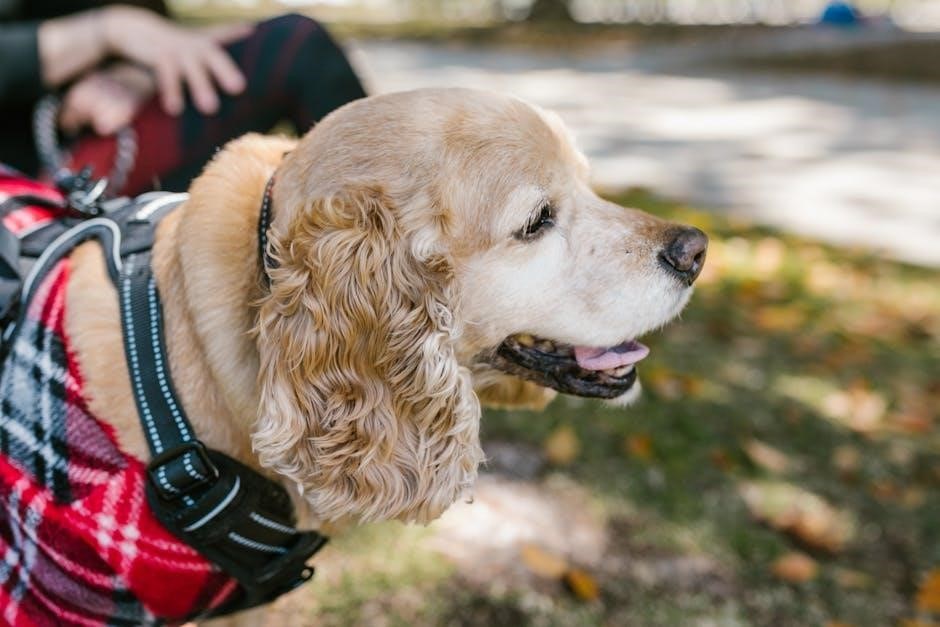
Service Animal Rights
Guide dogs in harness are protected under the Americans with Disabilities Act (ADA) and other global service animal laws, granting them access to all public spaces, including restaurants, shops, and public transportation. Their harness identifies them as working animals, ensuring legal rights to assist their handlers independently. These rights extend to hotels, hospitals, and public events, promoting equality and accessibility for individuals with visual impairments. Similar protections exist in other countries, reinforcing the essential role of guide dogs in enabling independent living.
Etiquette for Interacting with Guide Dogs
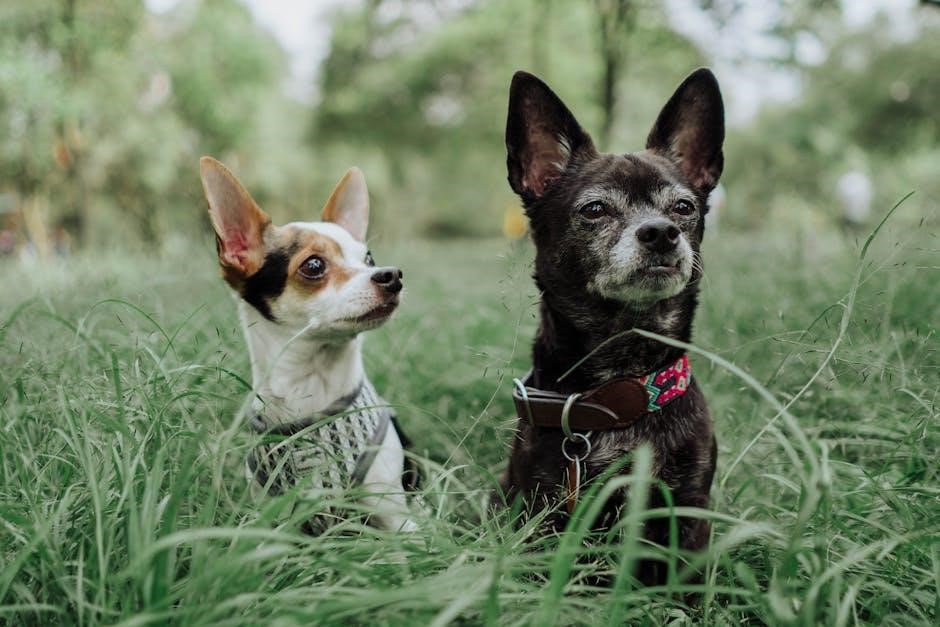
When encountering a guide dog in harness, it’s essential to remember not to pet, feed, or distract the dog, as this can disrupt its focus on assisting its handler. Always ask the handler for permission before interacting with the dog. Avoid making loud noises or sudden movements that might startle the dog. Respect the dog’s role as a working animal by allowing it to concentrate on its duties. Proper etiquette ensures the guide dog can effectively guide its handler safely and independently.

Future of Guide Dog Technology
Future advancements in guide dog technology include wearable devices and AI integration, enhancing navigation and communication for handlers, ensuring safer, more efficient, and adaptive mobility.
Advancements in Training Methods
Modern training methods for guide dogs now incorporate virtual simulations and AI-driven tools, allowing dogs to practice diverse scenarios in controlled environments. Positive reinforcement techniques are enhanced with real-time feedback systems, improving learning efficiency. Trainers use data analytics to track progress and tailor sessions to individual needs. These advancements ensure guide dogs are better prepared to handle complex situations, fostering greater independence for their handlers. The integration of technology and science continues to refine training, making guide dogs more effective and reliable companions.
Emerging Technologies
Emerging technologies are revolutionizing guide dog training and assistance. AI-powered harnesses now provide real-time feedback, helping dogs navigate complex environments more effectively. Wearable devices equipped with sensors can detect obstacles and communicate alerts directly to the handler. Additionally, virtual reality tools are being used to simulate diverse scenarios, enhancing a dog’s ability to adapt. These innovations not only improve training efficiency but also empower guide dogs to assist their handlers with greater precision and confidence in an ever-evolving world.
